Note: This website was automatically translated, so some terms or nuances may not be completely accurate.
The Printing Museum Communicates the Core Competencies of the Printing Industry

Corporate museums occupy a buffer zone spanning both the academic realm of "museums" and the business realm of "corporations." They are organizations that collaborate extensively with various corporate departments responsible for their operation, such as public relations, branding, advertising, and human resources. In this series, PR professionals will introduce various museums operated by corporations, exploring their roles, functions, and potential.
Printing is an information communication technology that has supported human progress and development. This installment introduces the Printing Museum operated by Toppan Printing. We will discuss the social significance and broad roles of printing as "Printing Culture Studies," as well as the core competencies of the printing industry.
Reporting and Text: Kazuki Kimura (PR Consulting Dentsu Inc.)
What is Printing? – Printing as Printing Culture Studies
What comes to mind when you hear the word "printing"? For many, it might be outputting documents created on a PC onto paper via a printer. While not incorrect, this is merely one example of viewing printing as a means. The significance and roles of printing are far broader and deeper than imagined. This can be understood alongside human history and progress through the lens of Printing Culture Studies. A place where you can experience print culture firsthand is the Printing Museum, operated by Toppan Printing. Visiting here will likely change your answer to the question, "What is printing?"
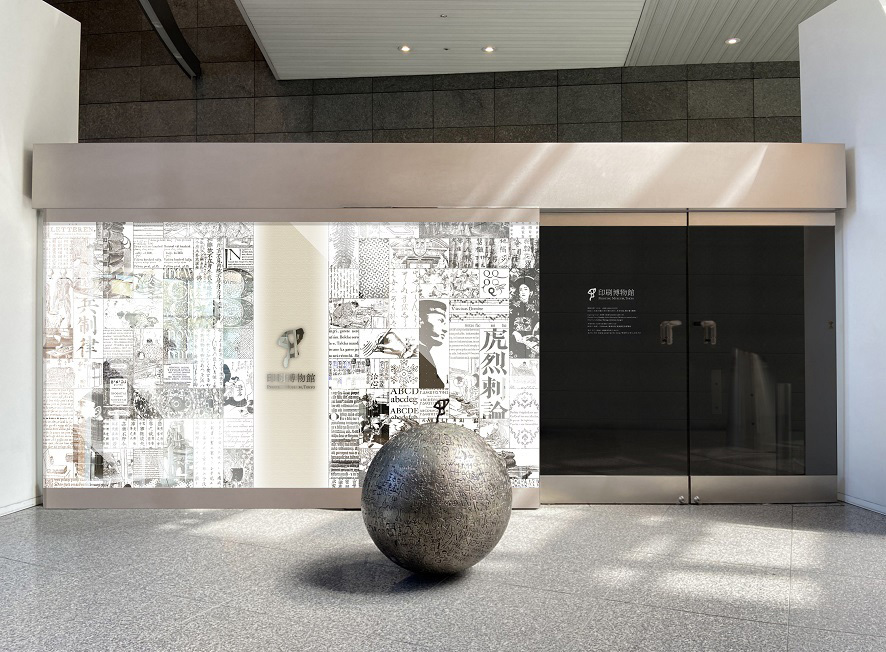
The Printing Museum: Preserving Cultural Assets, Conserving Heritage, and Exploring History
The Printing Museum was established in 2000 at the Toppan Koishikawa Headquarters Building in Bunkyo Ward, Tokyo, as part of Toppan Printing's 100th-anniversary initiatives. Its collection exceeds 70,000 items, focusing on the preservation of materials related to printing culture and exploring the historical relationship between printing and society. With a total floor area of 4,149 square meters, the museum features exhibition rooms, a library, a museum shop, and a printing workshop. Admission is ¥400 for adults, ¥200 for students, ¥100 for high school students, and free for junior high school students and younger. Currently, eight curators are on staff. Average daily visitors are around 100, with cumulative attendance reaching approximately 640,000 visitors over the 20 years since opening (as of 2020).
In 2001, Her Majesty the Empress (now Her Majesty the Empress Emerita) visited the museum alongside Her Majesty the Queen of Norway. Furthermore, the museum's significance and appeal have been recognized through awards such as the Japan Exhibition Society Award for Excellence in 2002 and ranking first in the Asahi Shimbun "be" ranking for "Corporate Museums Enjoyable for Adults" in 2012. For its 20th anniversary in 2020, the museum renewed its exhibits, shifting from thematic displays to chronological ones. This change makes it easier to understand the history of printing culture within its historical context.
Printing that Supported Human Progress
Upon entering the Printing Museum, a prologue exhibition before the permanent displays traces the evolution of human visual communication. Cave paintings from approximately 20,000 years ago represent the origins of communication. From these paintings emerged pictographs, then written characters, and communication technology evolved from manuscripts to printing, and finally to digital formats.

Incidentally, the Printing Museum's logo features an ancient Chinese ideogram meaning "to see." This character was chosen because printing inherently involves the act of seeing, making it part of visual communication.
The evolution of human visual communication begins with the following prologue. The permanent exhibition is organized into three zones, structured around the themes "History of Printing in Japan," "History of Printing Worldwide," and "Printing × Technology."
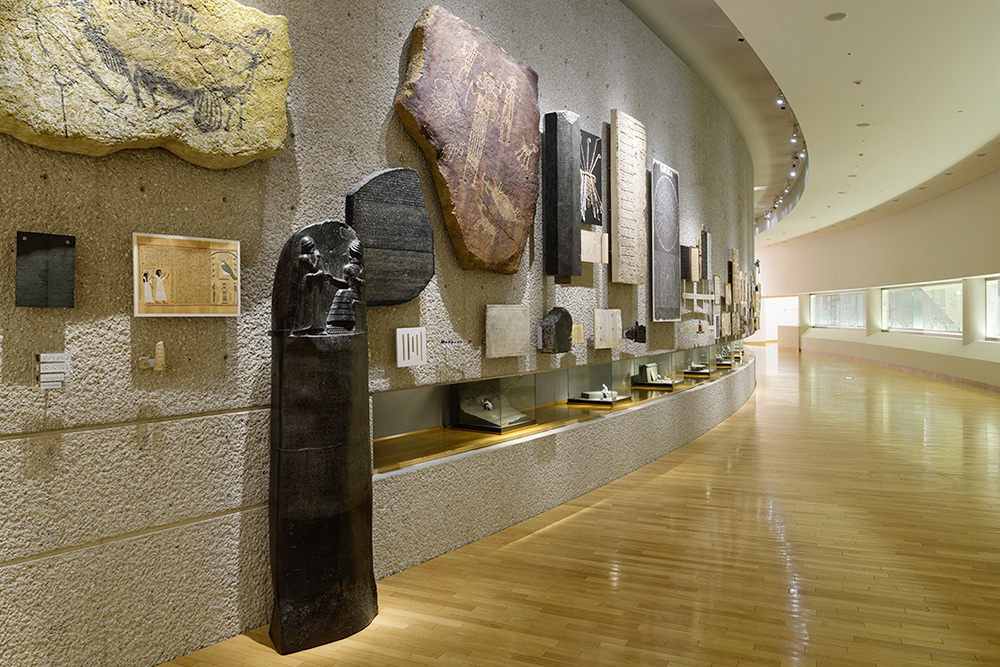
The world's oldest extant printed work, the "Hyakumangotara-ni"
The first zone, "History of Printing in Japan," traces the origins of printing back to the Nara period. It displays the "Hyakumanto Darani," recognized as the world's oldest extant printed work with a clearly documented printing date. It was printed between 764 and 770 at the behest of Empress Shōtoku.
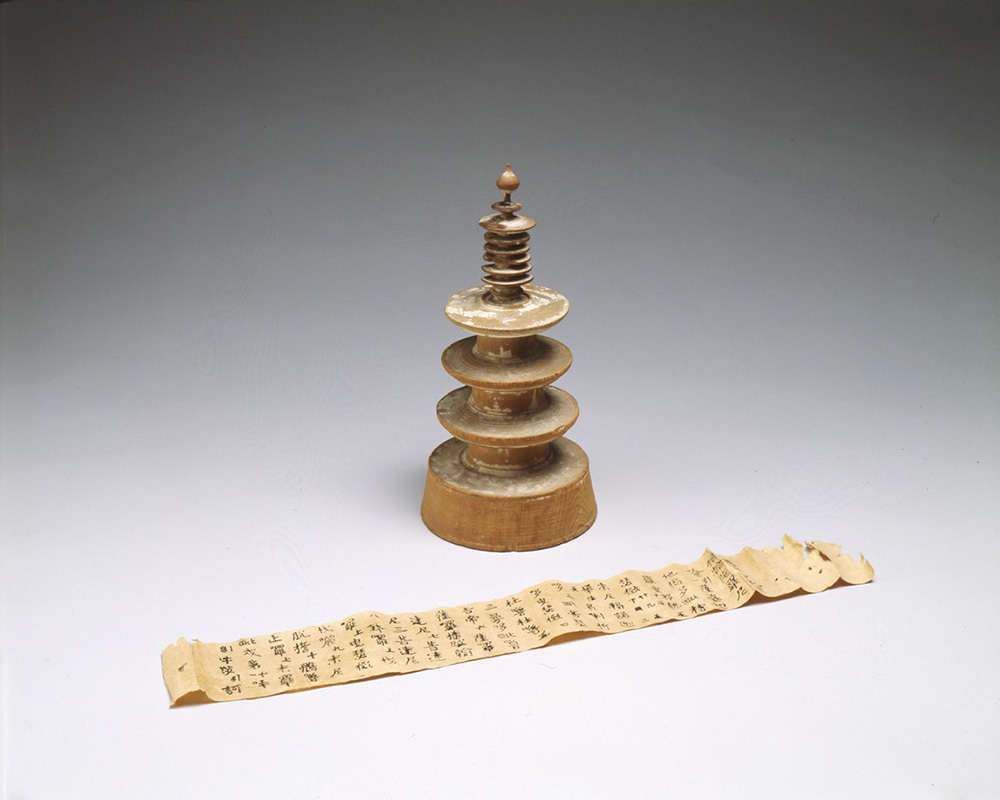
Printing, initiated by the Emperor, was initially centered around temples. However, by the early modern period, its practitioners expanded to include samurai and commoners. Printing locations spread from the capital to the provinces, and content diversified from religious and philosophical texts to popular reading materials. Since the modern era, printing has become indispensable in politics, economics, and society, expanding its role in supporting the consumer society to the present day. This exhibition allows visitors to understand the long history of printing in Japan and its significant impact on culture and society.
One of the Three Great Inventions of the Renaissance: "Movable Type Printing"
The second zone, "World History of Printing," explores how printing influenced pivotal moments in world history—such as the Reformation, the French Revolution, the Industrial Revolution, and the World Wars—alongside the global history of printing. Central to this is Gutenberg, who invented Western-style movable type printing in Germany during the 15th century.
In medieval Europe, books were produced through manuscript copying (the method of transcribing books by hand), resulting in limited quantities. They were extremely rare and expensive. Gutenberg, seeking a faster way to produce more books, conceived the idea of using movable metal type—individual letters separated from one another—and invented the printing press. Gutenberg's invention of movable type printing is considered one of the three great inventions of the Renaissance, alongside the compass and gunpowder. The actual Gutenberg Bible (42-line Bible), a printed book of high historical value, is also on display.
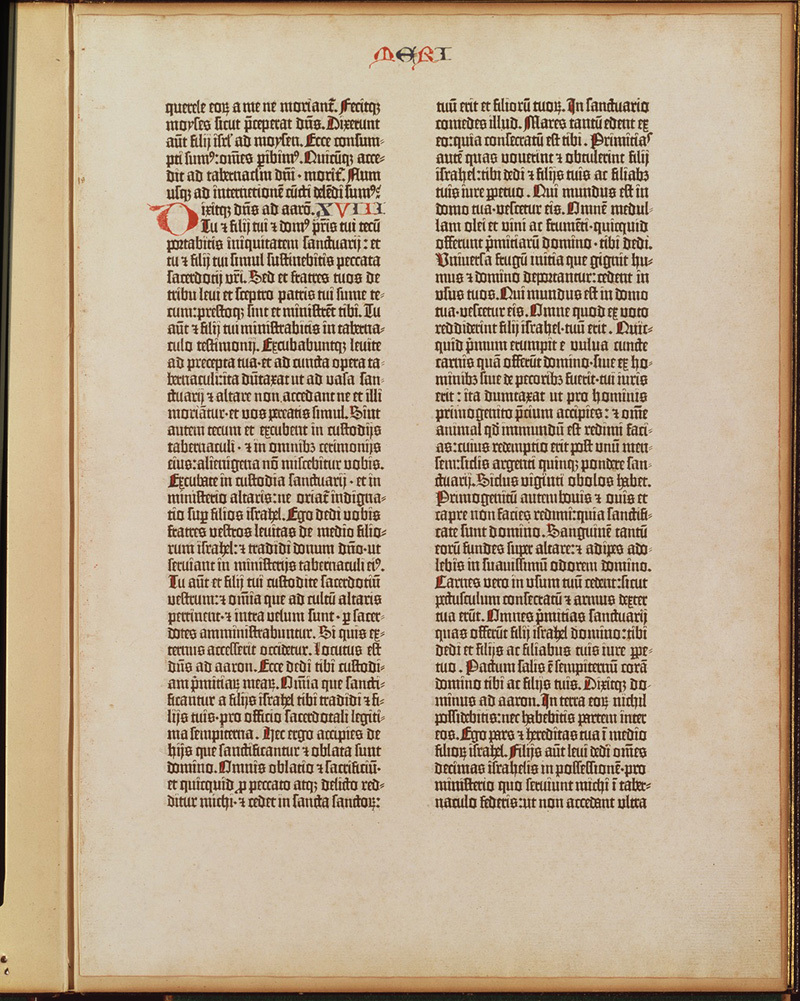
Letterpress printing spread rapidly, producing an unprecedented volume of books and fundamentally transforming communication itself. The scope of possible information transmission exploded. From there, it profoundly influenced diverse fields: advancing science and research, enabling political and social information dissemination through news media, commercial applications, and propaganda in warfare. Globally, the invention of printing technology clearly propelled humanity forward in leaps and bounds.
Printing technology has continuously evolved, leading to digital
The third zone, "Printing × Technology," shifts perspective to focus on the technological aspects. While the previous zones show printing's profound impact on Japanese and world history, this zone explores the technological innovations that made it possible. It introduces the four printing methods: letterpress, intaglio, lithography, and photolithography; the types of printing presses; color reproduction; and digital printing.
As also mentioned in "The History of Printing in Japan," printing technology was used in printing counterfeit-proof banknotes, supporting capitalism through security technology. Incidentally, around 1900, Toppan Printing—the company that now operates the Printing Museum—was founded as a startup using the then-cutting-edge letterpress technique known as the Helge method.
Beyond the permanent exhibition, which consists of three zones, lies the "Printing Workshop." Here, in addition to displays of printing presses and introductions to typefaces, visitors can actually experience letterpress printing.

Significance as a Corporate Museum
From the perspective of a corporate museum, what significance and role does it hold? We spoke with Yoko Shiki, a curator at the Printing Museum and an employee of Toppan Printing. "The Printing Museum does not feature displays directly promoting Toppan Printing as a company. Instead, it introduces the printing industry as a whole, alongside its history spanning past and present, East and West. Established as part of the company's 100th anniversary initiatives, the museum was founded under the significance of conveying the role and contributions the printing industry has played throughout history, as a leading company in the sector."
Since Japan lacked a museum dedicated to conveying the printing industry as a whole, its establishment was driven by CSR activities. "Actually, museums related to printing exist worldwide. For example, the Gutenberg Museum in Germany is even aiming for UNESCO Intangible Cultural Heritage designation. In 2018, an international consortium called the International Association of Printing Museums (IAPM) was also launched. The Printing Museum is a founding member of this consortium, which brings together printing museums from around the world. We engage in discussions at the global level about communicating the significance of the printing industry in information communication."
While many museums overseas are government-run, being operated by a company offers significant advantages. "For example, even if we publish papers or disseminate information as an independent museum, it might only reach those already interested, limiting our audience. On the other hand, having a company involved, where the company itself serves as an entry point or catalyst for interest, makes it easier to connect with a broader audience. Furthermore, I feel that being company-operated is advantageous for the museum in both economic and environmental terms."
Conversely, what benefits does the Printing Museum offer to the company? "The Printing Museum welcomes a diverse range of visitors. This includes university and vocational school professors bringing students for tours, professionals from related industries like other printing companies and publishers, design students, and the general public interested in culture. We also invite clients and utilize the museum for training new employees from Toppan Printing and related industries. In terms of education, we collaborate with nearby elementary schools for community outreach and conduct outreach lectures at universities. Given Toppan Printing's broad business scope and diverse stakeholders, fostering interest in printing among various people is a positive thing."
The Printing Museum not only displays exhibits within its own facility but also lends items to museums and art galleries both domestically and internationally, providing exhibition support. Furthermore, it collaborates on research projects at the request of educational institutions such as the University of Tokyo and the Joshibi University of Art and Design Junior College. It also aims to build the field of print culture studies through publications like "A History of Japanese Printing Culture."
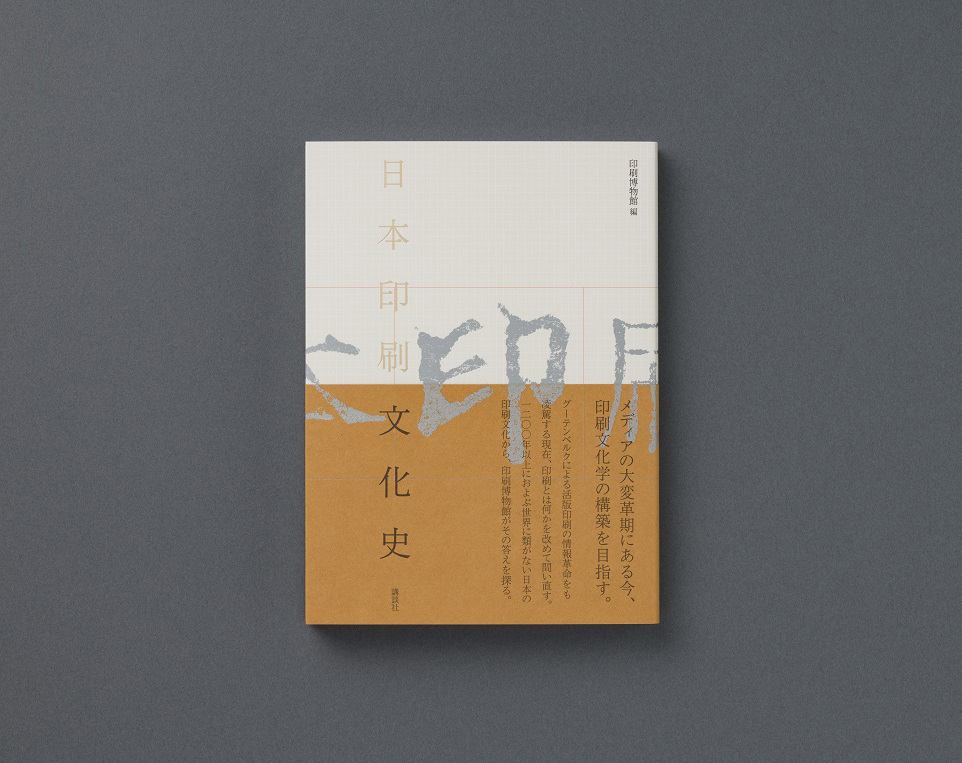
The Core Competence of the Printing Industry Revealed by History
The interview with Mr. Shiki also reveals that the Printing Museum prioritizes conveying the role of the entire printing industry, not merely serving as corporate promotion. Rather than unilaterally promoting what it wants to say, communicating its public benefit and social significance represents a PR (public relations) approach focused on building positive relationships. Considering how the Printing Museum functions as a corporate museum, let's examine its impact on the company through the lens of its industrial understanding.
Focusing on Toppan Printing, which operates the museum, reveals a diverse range of business domains—IC tags, semiconductors, displays, building materials, content and marketing, DX, and more—that extend far beyond what one might associate with the term "printing." However, understanding the role of the printing industry as conveyed by the museum reveals that these are extensions of printing technology. Tracing the history through the museum's prologue and permanent exhibition reveals that printing is an information communication that has supported human progress and development, and the evolution of printing technology is the innovation that made this possible.
The "communication" function that the printing industry has always served is universal across all eras, and the "technology" as the means to achieve it has constantly evolved. Communication and technological innovation can be considered the core competencies of the printing industry. All the aforementioned businesses exist along this extension of core competencies. Even businesses that appear diverse and seemingly unrelated at first glance reveal a shared origin when viewed through the lens of history.
Understanding the printing industry through the lens of a corporate museum deepens comprehension of the industry's core competencies. This, in turn, enhances understanding and trust in Toppan Printing, a leader within the industry. For Toppan Printing, which serves numerous stakeholders due to its broad business scope, the Printing Museum serves as a valuable PR asset that strengthens relationships with these diverse stakeholders.
[Editor's Note]
Through the three great inventions of the Renaissance, humanity gained mastery over "land" (gunpowder), "sea" (the compass), and "air" (movable type printing). However, the tools of civilization do not necessarily bring happiness to humankind. This bitter lesson is passed down to the future through the power of the invention of printing. Within the walls of the Printing Museum, a veritable treasure trove of knowledge, I found myself contemplating profound matters, quite out of character.
Throughout history and across cultures, people have been sensitive to the "spirit of the times." Because this "spirit" cannot be seen or touched. That is precisely why people created writing, drew pictures, and sought to convey them to many by engraving them onto media. Technology responded to this desire. The result was the sharing of information among many people. To those of ancient times, this would have been a dreamlike ideal society. However, it is also true that we now feel bewildered by the overwhelming "information" originating from movable type printing.
Of course, whether this reasoning hits the mark is something I'd like to leave to each reader. What matters, I think, is occasionally pausing to look at the essence of communication, or perhaps the essence of PR. I felt that such a message was engraved in each exhibit at the Printing Museum.
Was this article helpful?
Newsletter registration is here
We select and publish important news every day
For inquiries about this article
Back Numbers
Author

Kazuki Kimura
PR Consulting Dentsu Inc.
First Planning & Consulting Bureau
Senior Planner
Previously responsible for digital marketing and new business development. After joining DPRC, launched the business media platform AMP as a new media venture and served as its Editor-in-Chief. Subsequently, handled PR planning and consulting. Specializes in corporate branding, marketing, and digital strategy/planning. Other activities include serving as a Special Editorial Committee Member for the DX-focused media outlet JDIR, speaking at events, and hosting a Voicy podcast. Master of Business Administration (MBA) / Advanced Web Analyst / PRSJ Certified PR Planner



